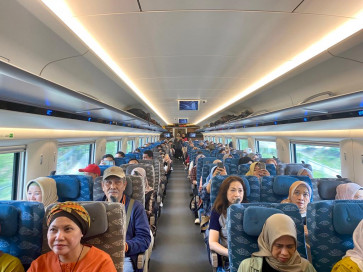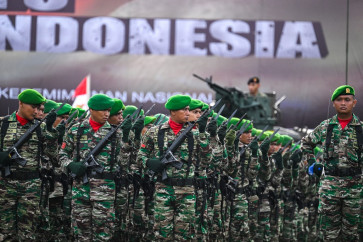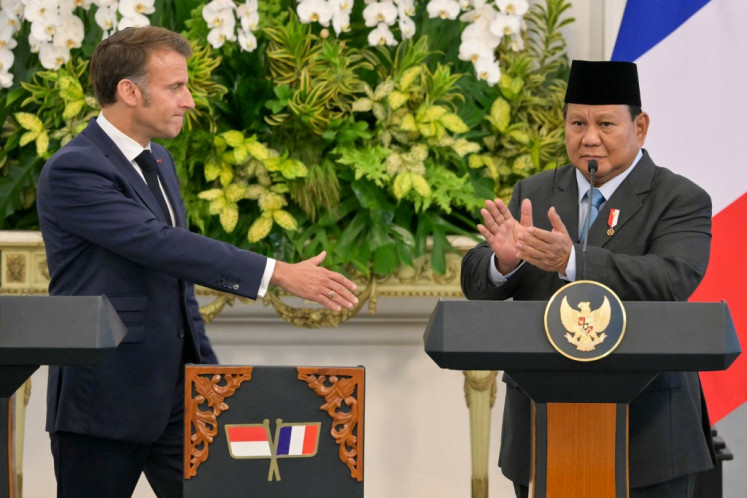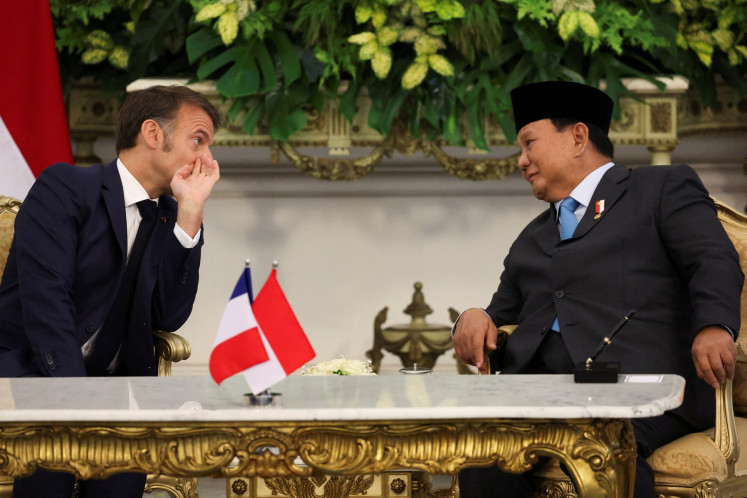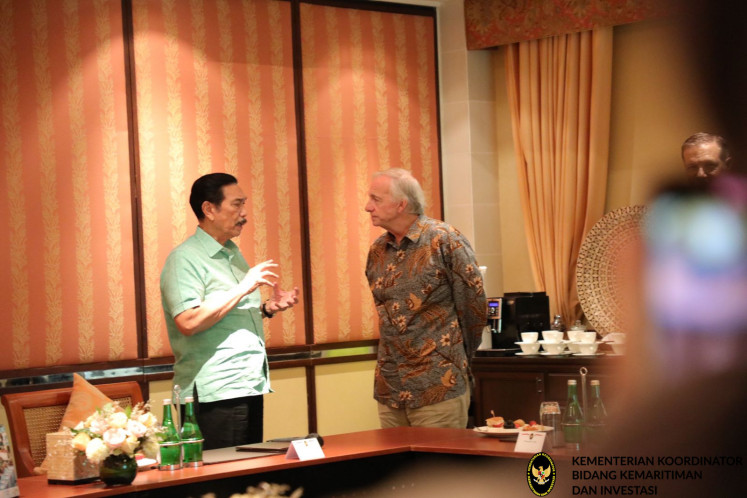RI students still dealing with COVID learning loss
A 2023 World Bank study has found that Indonesian students on average lost 11.2 months of learning over three years of COVID-19, but that the government fared relatively well in managing education delivery during the pandemic.
Change text size
Gift Premium Articles
to Anyone
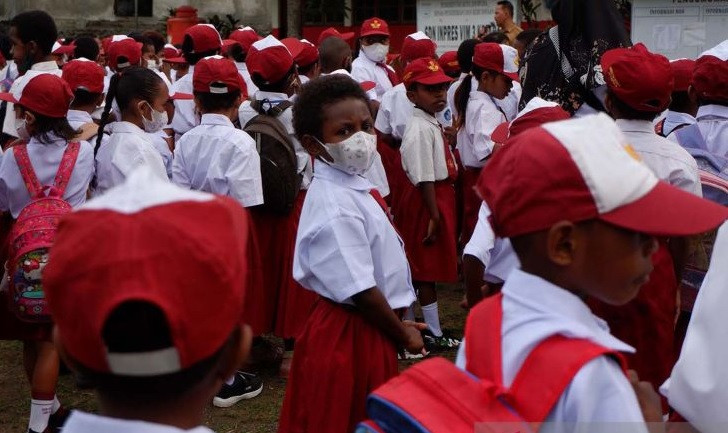
T
he COVID-19 pandemic has seemingly fallen out of the limelight, but the education sector is still reeling from its impacts, and a recent study suggests that Indonesian students have lost an average of nearly one year’s learning.
When the pandemic hit the country in March 2020, most schools were required to close, shift to online learning and stay that way for a total of 23 months. Some were luckier, and were permitted to accommodate a handful of students in their classrooms through hybrid learning.
Teachers, students and parents all struggled with the sudden transition to remote learning during that time.
Now that in-person learning has returned full swing, parents like Melly, 44, from South Tangerang, Banten, say their children are starting to reel from the effects of learning loss: the loss of knowledge and skills or a disruption to academic progress that students experience as a result of being away from school.
Melly said her sons, a 10-year-old in fourth grade and a 6-year-old in first grade, were now happy that they could learn at school with their friends. “But when it comes to learning loss, I can definitely see the impacts,” she told The Jakarta Post.
She added that her eldest son never had the chance to learn English in school, as the subject was dropped from the curriculum during the pandemic.
Meanwhile, her youngest was struggling to adjust to the rigors of being at school six hours each day, compared to two hours of online learning per school day during the pandemic.
The heightened public awareness of learning loss had been one of the silver linings of the pandemic, Anindito Aditomo, head of the Educational Standards, Curriculum and Assessment Agency (BSKAP) at the Education, Culture, Research and Technology Ministry, said in an interview with The Jakarta Post in late July.
Read also: Understanding Nadiem’s big splash in education sector
Improving learning quality had been the ministry’s focus since before the pandemic.
“But the issue of learning loss has made it even more urgent,” Anindito said. “[Indonesia] also suffered from it, especially since we ranked among the countries with the longest period of school closures.”
Indonesian students on average lost 11.2 months of learning, according to a 2023 World Bank comparative study that looked at the literacy and numeracy of fourth graders across the country in 2019 and in 2023. The study suggested a global average that each month of school closure equated to one month of learning loss.
But the World Bank study also put Indonesia among the countries with good management of learning loss.
Anindito attributed the country’s ability in minimizing the impacts of learning loss to the ministry’s decision to allow schools to switch to an “emergency curriculum” midway through the pandemic. This curriculum cut down the materials covered during one academic year to the bare essentials.
The emergency curriculum then became the prototype of the Kurikulum Merdeka (Freedom Curriculum) launched by education minister Nadiem Makarim, which emphasizes flexibility in learning structures.
“Schools [using the emergency curriculum] had, on average, 20 percent less learning loss compared to those that used the 2013 curriculum,” Anindito said, referring to the national curriculum that was in use before COVID-19.
Widening divide
While Indonesia may have performed better than other countries in mitigating learning loss, learning inequality among students, which was exacerbated by the pandemic, remains worrying.
Learning loss was ‘magnitudes higher among students from poor families and those whose parents didn’t have access to electronic devices or are illiterate,” Anindito said. He emphasized that this applied to students in both less developed regions as well as big cities.
Read also: Govt stands by school zoning policy despite reports of cheating
The World Bank study reflects Anindito’s view, as it found varying levels of learning loss depending on students’ backgrounds.
Prior to the pandemic, students from poor families were behind in their math and language skills by an average of respectively 13.9 and 18.7 months compared to their more well-off peers. These figures widened to respectively 28.5 and 40.2 months after COVID-19 hit the country.
The biggest difference in learning loss was apparent between students with internet access and those without. Those with internet access averaged learning losses of 7.4 months in numeracy and 4.1 months in literacy, while students without internet access averaged learning losses of 35 months in numeracy and 57 months in literacy.
Ministry’s focus
The World Bank study estimated that the national average of learning loss in Indonesia could incur a loss of Rp 9.9 million (US$691) in future annual earnings for each student.
Anindito said Nadiem and the ministry were consistently focused on improving education quality, and that learning loss was only one issue among many they were working to address.
Read also: 'Merdeka' curriculum sees increasing popularity among teachers
“It’s true that [the pandemic-induced] problem of learning loss has made the situation worse, but the learning crisis has been around for decades. That’s why all our main programs are focused on addressing this issue,” he said.
Since the pandemic started, Nadiem has led the education ministry in launching Kurikulum Merdeka, which has been adopted by 80 percent of all schools nationwide, even though it is still optional.
The ministry also launched the national education assessment scheme to measure the quality of education delivered by each school.

